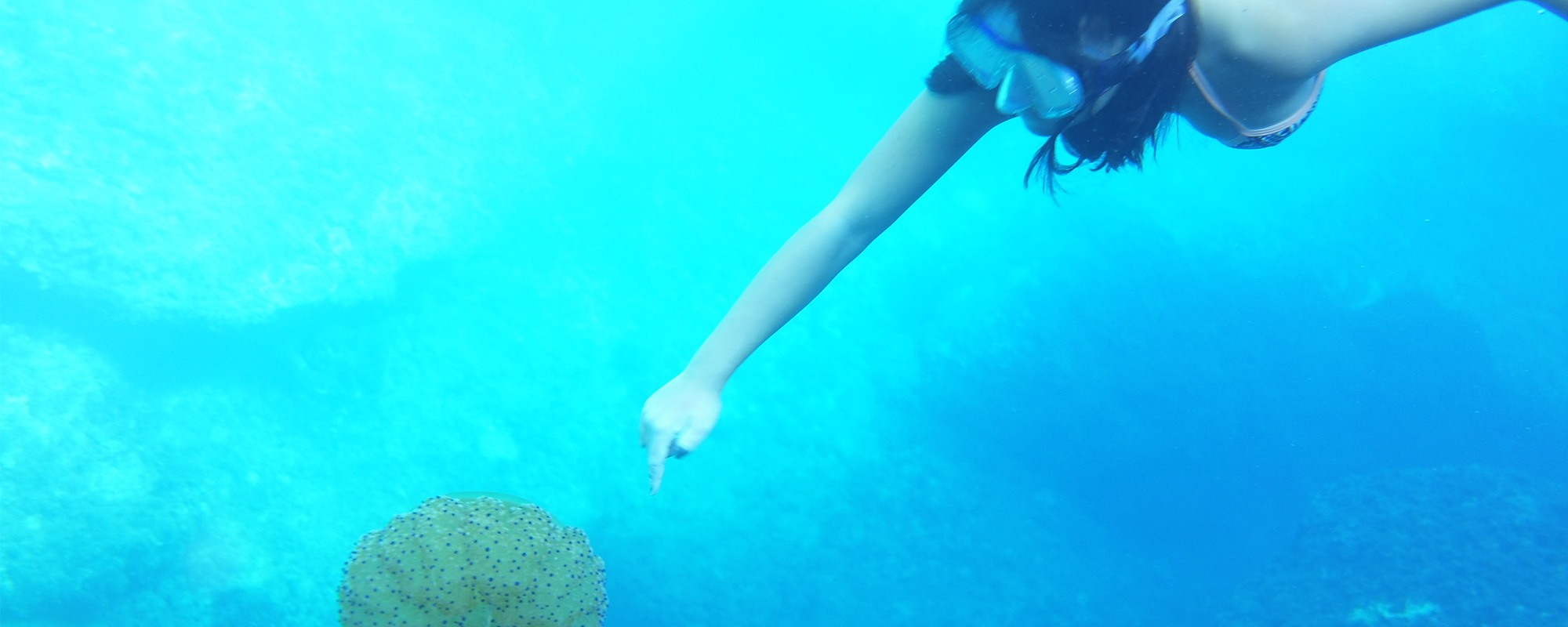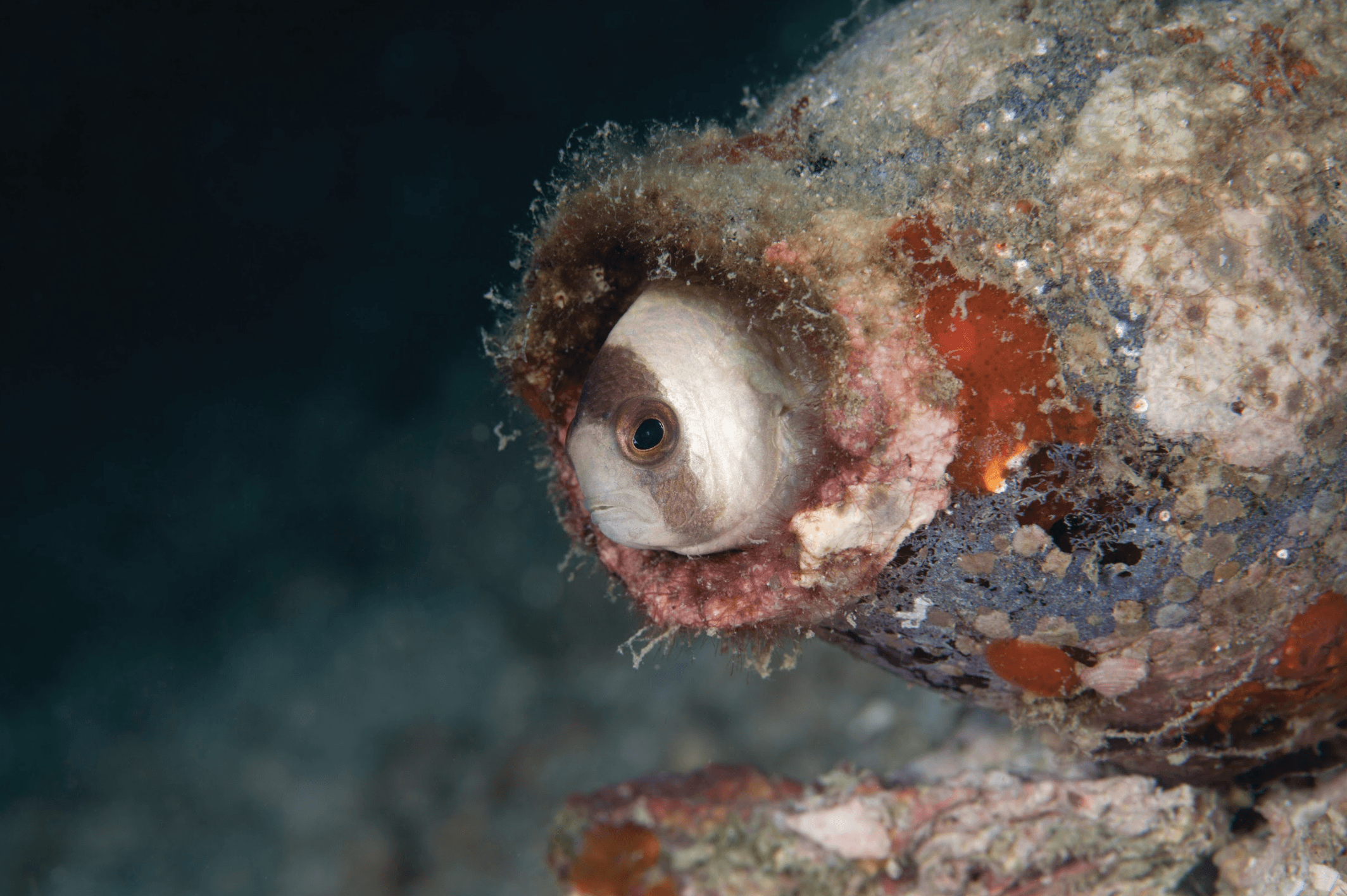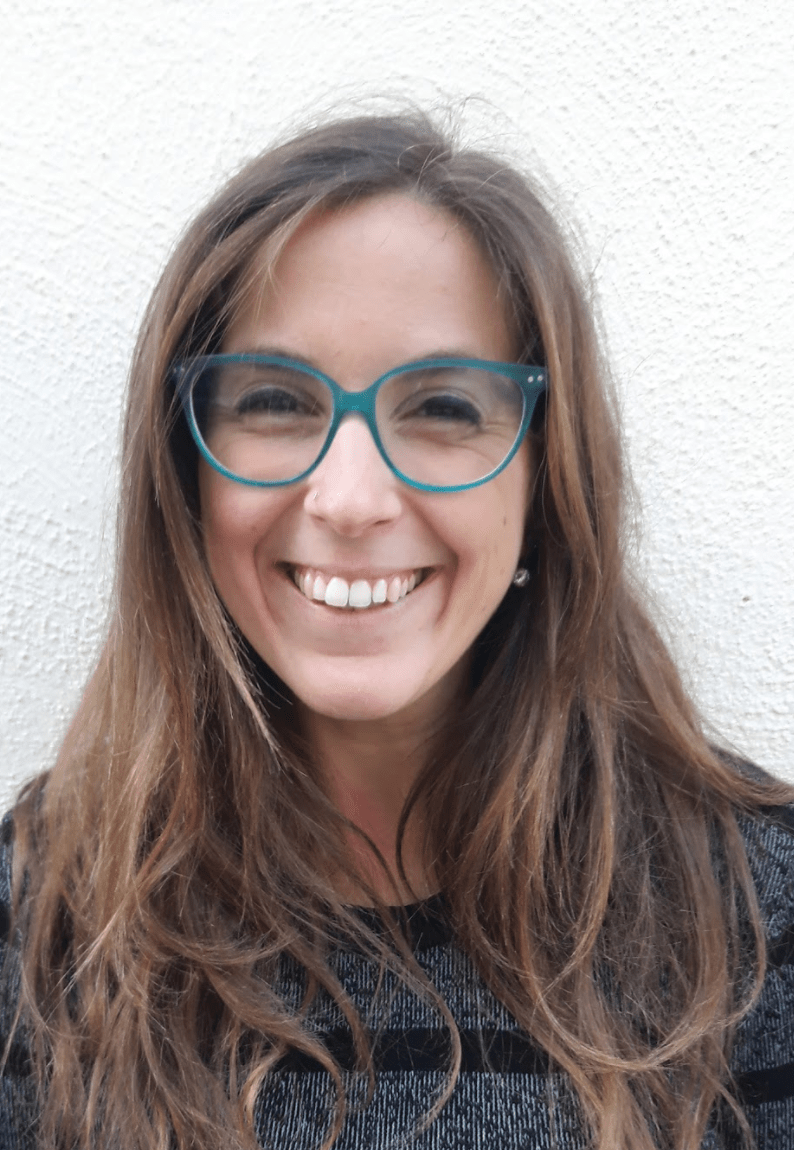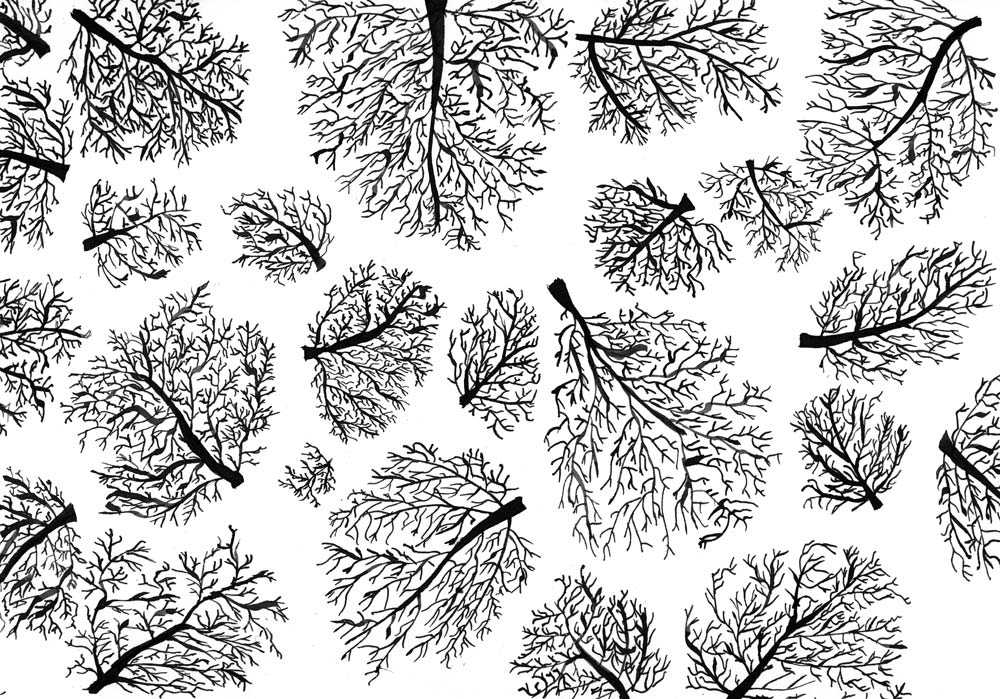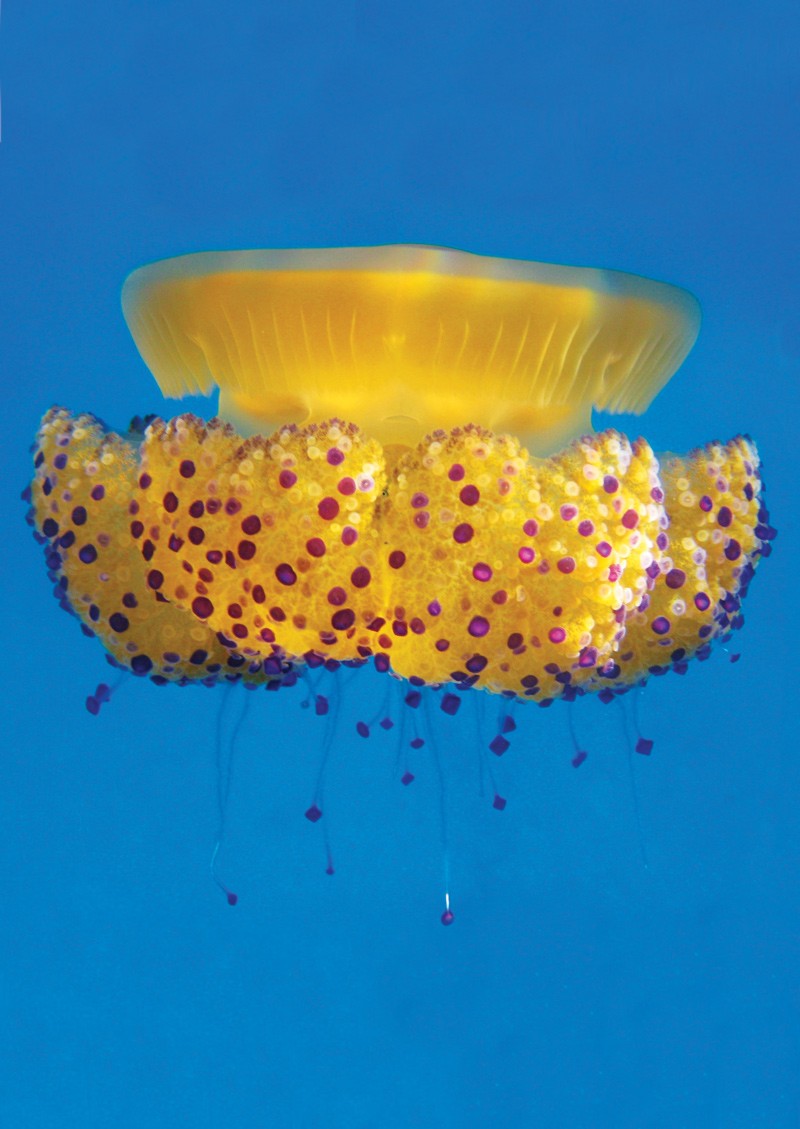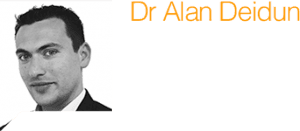One of the largest citizen science projects in Malta, Spot the Jellyfish has helped record many interesting discoveries about marine life. But as the project grows, the team must expand their technology to cope with the influx of data. Prof. Alan Deidun, Prof. John Abela, and Dr Adam Gauci speak to Becky Catrin Jones about their latest developments.
Continue readingTen years of jellyfish spotting
The unpalatable reputation of jellyfish as nasty stingers (although few are) can impact tourism. Prof. Alan Deidun writes about how jellyfish capture the collective imagination: their grace and beauty, their power station-stopping capabilities, and how scientists can learn from children.
Continue readingKemmuna
Despite being one of Malta’s hottest attractions, a lot of what Comino has to offer is covered by the cool blue waters that fuel its popularity. Prof. Alan Deidun and his team have embarked on a journey to bring what’s hidden beneath to the surface, tentacles and all.
Have you ever googled Comino? Approximately 10,900,000 results pop up, and the vast majority of them relate to holidaymaking tips and weather information, with a sprinkling of research projects. Once the hideout of pirates and smugglers, the little island’s crystal-clear waters have now made it a paradise for travellers. But despite the suffocating love and attention Comino gets during the summer months, many of its wonders remain hidden underwater, unattainable to most.
This was the motivation behind Prof Alan Deidun’s most recent documentary, Comino: A Secret Paradise. An academic at the Department of Geosciences (University of Malta), Deidun is an avid diver, environmentalist, and advocate who wants ‘to bring the underwater world to people who don’t normally venture beyond the swimmer’s zone.’
Deidun’s first foray into documentary filmmaking came with Dwejra (2012), a film that featured the long-lost Azure window. Soon after were Rdum Majjiesa (2012) and Mġarr ix-Xini (2013). His big break came with Filfla (2015) which went viral and continues to do rounds on social media today. Even in 2012, the aim was always to highlight the beauty and importance of local Marine Protected Areas. In 2019, this has not changed.
Behind the scenes
The team met to film the first documentary in the series back in 2012 with Monolith Limited. The experience was so positive and fruitful that the team has remained practically unchanged since. Film after film, they all keep coming back to work together. Directed by Pedja Miletic and funded by the Malta International Airport Foundation, Comino is the fifth film in the series.
Filming took place throughout 2018, focusing on everything: marine to terrestrial, shallow to deep, diurnal to nocturnal. Deidun admitted that the team struggled with finding and filming enough organisms. ‘It took around 50 trips to Comino and back to get the footage we needed,’ he says. But the result speaks for itself.
Helping them achieve the sheen they needed for the final work, Deidun and his colleagues used a state-of-the-art 8K underwater camera. Hardware of this calibre is the sort you find on big budget productions like the BBC’s beloved Blue Planet. The camera enabled the divers to film animals from a different perspective, providing audiences with a new experience. Take, for example, the Common Octopus, Octopus vulgaris, a documentary staple whose camouflaging skills got some well-deserved attention in Comino. The camera also came in handy with more delicate, elusive creatures. The weird and wonderful Berried Sea Anemone and the Flying Gurnard, species the team hadn’t been able to capture in previous work, could now be seen in all their complexity.
Science & art for the environment
The motivations behind this documentary are complex, but one big factor Deidun mentions is a lack of science communication—a global issue.
Deidun emphasised that academics need to share their findings. ‘You can’t just publish in a peer-reviewed journal and stop there,’ he says. ‘You need to engage, start a dialogue with society.’ Because despite all of us choosing different walks of life, we share one home, and scientific findings should influence how our environment is treated. To move from research to societal action, communication is key. Scientific findings on their own quickly become stagnant, but through discussion and dialogue, they can thrive in the different layers of our communities: from quick, friendly conversations to formal government conferences. A conscious understanding of our environment leads to its conscious use.
In this case, Comino can help engage people with marine diversity and show them this complex micro-realm that ‘is not just Blue Lagoon.’
Most people know about the Damselfish (Ċawla in Maltese) or the Mauve Stinger (BRAMA! in Maltese). This might make people think that Maltese waters are safe from overexploitation, but this is far from the truth.
The animals that are difficult to see are those that need the most attention. Fauna such as the endangered Rough Ray, the protected, crimson purple Echinaster sepositus starfish and the Striped Prawn all face man-made threats.
‘This has resulted in an alarmingly low fish biomass [amount of fish] for the Maltese waters,’ Deidun says. ‘But that’s not surprising. Maltese waters are constantly fished. Overfishing is a reality.’ Even Comino, a Marine Protected Area (MPA), is surrounded by nets and fishing lines. It seems that while most of us are proud of our crystal-clear waters, we are not paying attention to the problems ailing it. ‘This is what we hope to change,’ Deidun adds.’
Comino’s future; our future
Deidun has plenty of hope. He tells us that ‘our MPAs are paper tigers for now, but the Environmental Resource Authority (ERA) is working on having approved management plans’ which need to be ready and presented to the European Commission by the end of 2019—a step towards a healthier sea with a sustainable future.
As for the future of these documentaries, Deidun has big plans, and they involve Netflix. He also wishes to add the films to digital libraries of local schools. In time, this will all feed into his vision of establishing a local ocean literary centre, a space where people of all ages can learn about our sea through science, arts, and new technology.
The Maltese are an island people. The sea is part of our heritage, a part of our identity. And we must work harder to preserve it for future generations. It is through documentaries like this one that we can appreciate and protect our home. As biologist Jane Goodall once said, ‘Only if we understand, can we care. Only if we care, we will help. Only if we help, we shall be saved.’
Spotting marine litter
Marine litter is a problem found across the world. As well as being directly deposited in seas and oceans, plastic, wood, rope, and other items are accumulating on land and making their way into bodies of water. On the Maltese Islands, such littering happens frequently. Last summer the Physical Oceanography Research Group (Faculty of Science, University of Malta [UM]) took a step towards tackling the issue.
Under the supervision of Prof. Alan Deidun and Adam Gauci, I sought to harness innovative techniques and create a monitoring programme that would begin to identify what kind of litter is on Malta and Gozo’s beaches.
The national Marine Strategy Framework Directive was followed to ensure good data collection and meeting of the ‘Good Environmental Status’ by 2020. The study used images captured by a drone in three coastline areas: the north east Marine Protected Area of Malta, Qawra Point, and the eastern and western points of Baħar Iċ-Ċagħaq. Flying at an altitude of 30 meters, the drone was programmed to spot specific categories of marine and coastal litter. These included plastic, wood, rope, rubber, and other miscellaneous items such as washing machines and mattresses.
Apart from characterising marine litter, the project aimed to observe whether hydrodynamical phenomena, such as wind and currents, are also influencing the accumulation of litter. However, results showed that the difference between the areas of study was not due to dynamics of coastal currents and coastal topography, but to human activities. In Baħar iċ-Ċagħaq, for example, categories such as wood and plastic were found on land at considerable distances from the shoreline, close to points easily accessible by cars.
We also used statistical analyses to confirm that parameters such as tourism, lack of public knowledge, and lack of environmental consciousness are affecting the accumulation of marine litter, laying the blame firmly on human activities.
The remedy to the situation is in Maltese citizens’ hands. Only we have the power to turn things around. It’s time to clean up our act.
This research was carried out as part of a Masters in Physical Oceanography, Faculty of Science, UM.


